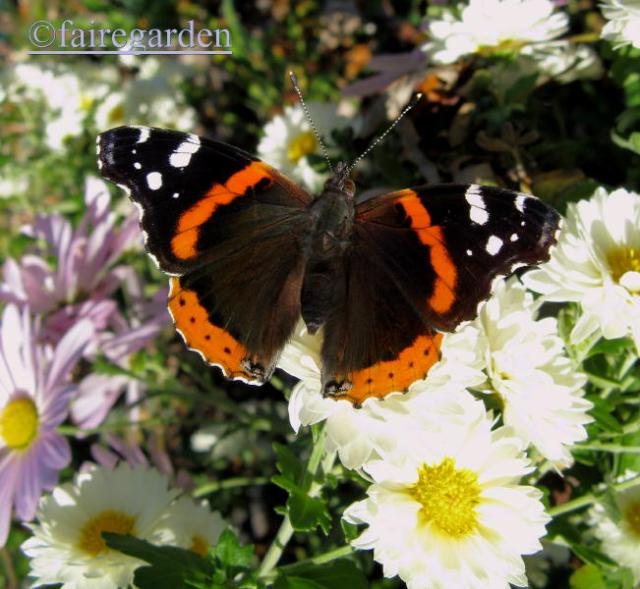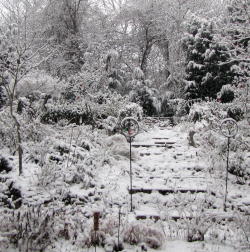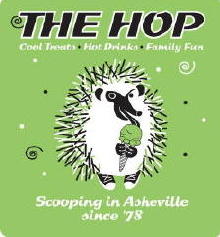
Although their names have been changed, not to protect the innocent either, fall blooms in the Fairegarden consist mainly of asters and mums.

This is a wild group, literally. The small white flowered asters rule this property with millions of seeds lying in wait in the soil for an opportune moment to germinate, flower and make yet more seeds to continue the cycle. We let some of them have their wish.

The mum group began with the planting of Hillside Sheffield Pink, henceforth referred to as the Sheffies. Click here to read a post about them.

The original patch of Sheffies, planted at the top of the hill near the knot garden, begat a yellow flowered descendant, henceforth referred to as the Yellow Sheffie. Lax maintenance, meaning that there was no cleanup of spent blooms as winter rolled in, allowed a rogue seed to be washed down the hillside. What a surprise when the identical looking apricot petaled bud opened to reveal flowers of golden tones. Standing more upright, the Yellow Sheffies are a delight.

Blue flowered asters were purchased one year to bring some of that cooling color to the fall spectacle. Aster oblongifolius ‘October Skies’, Aster tataricus from Gail, Aster tataricus ‘Jindai’, (a shorter version of the species, shown above), Aster laevis ‘Bluebird’, Aster x frikartii ‘Mönch’, Aster paludosus spp. hemisphericus, …

…and a piece shared from the low spot on a North Carolina mountain, Aster cordifolius join the Aster novae-angliea pink and purple to wave in the soon to be winter wind. Smaller white Aster ‘Snow Mound’ and Aster ‘Purple Dome’ round out the named Aster population. I hope I haven’t left anyone out, but it is possible, the names will be added when, and if remembered. It is hard to keep track of everything growing here, to be honest. Added: I forgot the yellow aster named for my friend Ruth at Mouse Creek. During the 2005 national Perennial Plant Association Symposium, the fall-blooming yellow aster Heterotheca villosa ‘Ruth Baumgardner’ was introduced in her honor.

More mums were added, all from our local jewel of a nursery/farm, Mouse Creek, to enhance the look and enrich the gene pool. Mums ‘Pink Grandchild’, ‘Yellow Button’, ‘Ryan’s Pink’, ‘White Daisy’ and simply ‘Yellow’ joined in the raucous revelry, the Red Admiral butterfly approves. Pollinators of all shades love the asters and mums.

Noticed this spring were mum seedlings in the gravel paths and compost bin contents. Expecting more Sheffies of the apricot and yellow varieties, it was a happy surprise when many of these babies turned out to be different yellows and a daisy-like single white.

Asters and mums mix it up around here, making a stunning stew of petals, stamens and pollen, enjoyed by both critters and human types. Both plants, whatever one wishes to call them, enjoy full to partial sun and good drainage, they get along chummingly.
Frances









Joy – in the reading and looking, because it is there in the making and writing 🙂
Frances, I adore our native asters and have a fondness for those Sheffies. I have a sweet yellow one and the Hillside Pink you shared with me. Each fall I think, I must get more~I think I must try dividing them! Your photos of the pollinators are fantastic~Don’t you love seeing the bees and the Flower Fly bee mimic! Have a nice weekend. I hear rumors of spotty frost in my neighborhood. xxoogail
Your photos are so good Frances. You should put the first one in to the GGW Monthly challenge. This time it is fill the frame. To me your first photo does that very nice. I feel like I could reach out and touch the blooms. Have a great weekend.
I’m just having my first fall of sheffies. I was going to wait until they sprouted in the spring to divide and spread them around. Do you suggest doing it now or after bloom this fall instead?
Is that a Sheffield daisy in your last photo? I saw some at the Smith College Botanic Garden and just got an id. They are so beautiful – and hardy. Your collection is wildly wonderful.
Just lovely! You are so good at spreading things around just where they are needed.
With that kind of gene pool there is no telling what might show up. This is exactly how gardeners are at the forefront of helping preserve the planet. Our gardens can act as repositories of plant and animal diversity that can reach out beyond the garden’s boundaries in ways we can’t manage on our own.
I love asters. Those ones are very pretty. Here in Northern California we have lots of asters blooming right now in the fields and clearings along with goldenrod. Nice mums too. I have a few getting ready to bloom in my garden. They are descendants of the Thanksgiving mums we get every year. 🙂
All are delightful to me. The mums last so long (but the bunnies eat the asters here). Have a great weekend.
I like them all! What a beautiful display, Frances! I wish my plants would spread on their own. Unfortunately, they don’t. The soil is not very good where they grow – under the big trees with a lot of needles.
Pingback: Flowery Free For All | Fairegarden